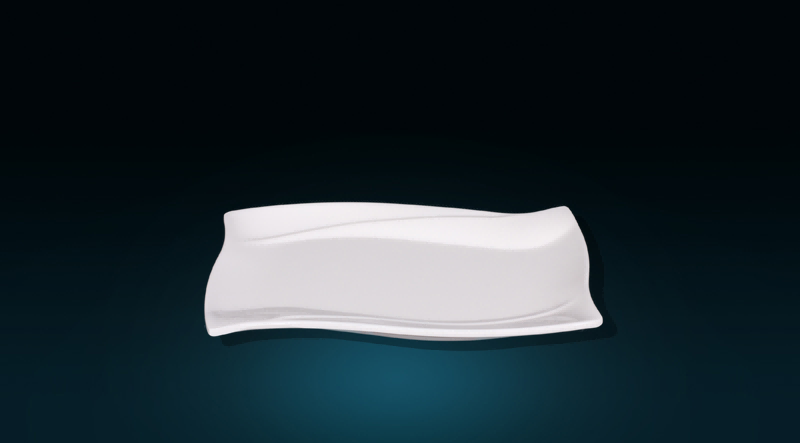A new revolution in the catering industry, "Jiatianfu" tableware
2024-06-05
In the ancient town of Shawan, shaded by green bamboos, an oyster shell wall stands beside an ancient well. Layers of oyster shells are neatly spread on the wall, shining white under the sunlight.
In Liuchun Bieyuan deep in the ancient town, an ancient oyster shell wall appears in front of you. The tall courtyard walls are densely covered with neat and huge oyster shells. Due to the long time, the oyster shells are somewhat blackened, and some oyster shells still show signs of falling off. This oyster shell wall is more than 600 years old, and it is the most classic oyster shell building in the town. In ancient times, our area was the sea, and the seaside oyster resources were abundant. Later, as the coastline continued to expand, many oysters were buried underground, forming a rich oyster mine belt. These oyster shells were not buried deep and were very convenient to dig. In addition, we rely on the sea to eat the sea, so we usually eat a lot of oysters, which produces a lot of oyster shells. The materials were collected locally, and they happened to be used to build a house. There are many benefits to building a house out of oyster shells. First of all, oyster shells are hard and are good materials for building houses. The surface of the oyster shell is uneven, which can be used to build a house and prevent theft. More importantly, houses built with oyster shells can prevent wind erosion, insect pests, water and moisture. The oyster shell house also has the function of dissipating heat and heat. People living in it are warm in winter and cool in summer, which is very comfortable.

Oysters, also known as oysters, are famous and common shellfish in the world. my country's oyster production ranks first in the world's oyster farming production. There are more than 20 types of oysters in coastal provinces, and they are one of the most important economic shellfish in coastal areas. At present, the development of oysters in my country is mainly to process the edible parts. While the edible parts are utilized, a large number of oyster shells are treated as waste. How to realize the comprehensive utilization of oyster shells has become a research with important environmental and economic significance.
Oyster shells are formed by organic matter through the regulation of biomineralization, that is, a highly ordered multi-layered microlayer structure composed of a small amount of organic matter macromolecules (proteins, glycoproteins or polysaccharides) as the framework and calcium carbonate as the unit for molecular operations. The basic structure of the oyster shell is divided into three layers: the outer layer is an extremely thin hardened protein cuticle; the middle is a prism layer interwoven with calcareous fibers, which has a leaf-like structure and natural gas pores; the inner layer is a pearl layer, mainly composed of carbonic acid. Calcium and other minerals and a small amount of organic matter.
From the perspective of material composition, the material composition of oyster shells is divided into two parts: inorganic matter and organic matter.
The inorganic matter is mainly calcium carbonate, which accounts for more than 90% of the mass of oyster shells, of which calcium accounts for (39.78±0.23)%. In addition, it also contains more than 20 trace elements such as copper, iron, zinc, manganese, and strontium. In 1973, the World Health Organization announced 14 essential trace elements for the human body, including iron, copper, manganese, zinc, cobalt, molybdenum, chromium, nickel, vanadium, fluorine, selenium, iodine, silicon, and tin, among which zinc is important for the growth and development of the human body. , intellectual development, and improving immunity are essential. As the most zinc-rich food, oysters are not only rich in zinc in oyster meat, but also in oyster shells, reaching (80±1.45) μg/g.
The organic components of oyster shells account for about 3% to 5% of the mass of oyster shells, and contain 17 kinds of amino acids such as glycine, cystine, and methionine. The organic matter part of the shell is divided into soluble organic matter and insoluble organic matter, and its content varies with the type of shell and the growth period, generally accounting for 0.01% to 10% of the dry mass of the shell, of which the content of soluble organic matter is even less, accounting for about 0.03% to 5% %.
The oyster shell is mainly composed of prism layers. Due to its special leaf-like physical structure, a large number of 2-10lm microporous structures, and biologically active amino polysaccharides and characteristic proteins, it can produce a variety of pore structures with different functions after treatment, making it It has strong adsorption capacity, inclusion function and catalytic decomposition. Therefore, foreign scholars call it the most attractive biomaterial modifier in the 21st century, and it has a wide range of applications.
The formation of oyster shells is highly similar to the deposition of bone salt in the human body. Studies have found that there is no adverse reaction when implanting oyster shells as biomaterials into mice. In vitro tests have confirmed that the treated oyster shells have good biomaterial activity.
In the process of investigation and research on the characteristics of oyster shells, we were also pleasantly surprised to find that in the classics of traditional Chinese medicine, it has been recorded that oyster shells were directly used as medicine or calcined and ground into powder for use as medicine. He further checked relevant information and found that oyster shells have the effects of calming the nerves and helping sleep, nourishing and astringent, softening and resolving masses, and can be used to treat neurasthenia, sleep disorders, anxiety, depression, vertigo syndrome, lymph node tuberculosis, tinnitus, lipoma, Intra-abdominal lumps, etc. Oyster shell has astringent effect and can be used to treat hyperhidrosis during the day, hyperhidrosis after falling asleep, acute and chronic gastritis, peptic ulcer, etc. There is a saying in "Qian Jin Fang" about oyster powder: "Treating night sweats when lying down, and headache due to wind deficiency: three liang each of oyster, Atractylodes macrocephala, and Fangfeng. To cure the sieve, take the square inch dagger with wine, two days a day." It is written in "Haiyao Materia Medica" : (Calcined oyster) Mainly for men's nocturnal emission, fatigue and fatigue, tonifying kidney and righteousness, stopping night sweats, removing restlessness and fever, treating typhoid and hot phlegm, nourishing and calming the nerves, and treating children with convulsions and epilepsy. Various investigations and discoveries have further strengthened our confidence and expectations for the material oyster shell
A difficult exploration to develop new materials
We began to travel around the world, traveling between various university laboratories and scientific research institutions, looking for research teams on the comprehensive utilization of oyster shell materials, hoping to effectively utilize and develop oyster shells. At the same time, we set up a technical research and development team to conduct in-depth research on this problem, and carried out hundreds of attempts and experiments on material technology and structural technology, and finally developed the first generation of Jia Tianfu in September 2022. Eco-friendly oyster shell tableware.
Jiatianfu tableware, also known as environmentally friendly oyster shell tableware, is a new material made of oyster shell powder + PP, plus polymer materials. This new type of resin is waterproof, strong, heat-resistant, and non-flammable. It is conducive to reducing the phenomenon of cutting down trees to make paper and saving oil resources, and is non-toxic and environmentally friendly. Because of its lightness, beauty, high and low temperature resistance, and non-fragile properties, it is used in the catering industry and children's catering industry.
Tableware performance (three highs): high gloss (110°), high temperature resistance (170°C), high strength (drop resistance)
Advantages of tableware: it can be used in microwave ovens and disinfection cabinets, and it will not burst at high temperatures;
The tableware is non-stick, non-toxic, lead-free, and has no harmful gas, and all environmental protection indicators meet international standards;
Jiatianfu tableware products: bright luster, easy to color, slow heat conduction, not hot, smooth edges, delicate feel, easy to clean.
Tableware quality implementation standards: the product has passed various testing indicators; the product has passed the SGS standard; the product has passed the food container certification.
A new round of technological revolution
1. Raw materials used in Jiatianfu tableware: It is a new type of material made of raw oyster shell powder + pp plus polymer materials. Through high temperature and high pressure chemical reaction technology, it is a green and healthy raw material.
2. The material of Jiatianfu tableware can be reused, degraded, and fully burned. During the burning process, no black smoke or toxic gas is produced. After burning, only ash powder is left and returns to the soil.
3. Jiatianfu tableware is one of the most environmentally friendly materials. It is conducive to reducing the phenomenon of cutting down trees to make chopsticks and saving oil resources, and it is absolutely non-toxic. It does not add strong acid, strong alkali, melamine, formaldehyde and other chemical raw materials, which is superior to traditional melamine materials.
4. Jiatianfu tableware can be used in microwave ovens, sterilized in disinfection cabinets, does not burst at high temperatures, is resistant to falling and shattering, is lead-free, non-toxic, has slow heat conduction, does not burn hands, has smooth edges, is easy to clean, and is oil-resistant and impermeable. Aging: 36 months.
5. Jiatianfu tableware has a wide range of application scenarios, and can be used in high-end and high-end restaurants: Chinese and Western restaurants, hotels, restaurant chain restaurant custom-made tableware, large canteen trays, etc., are environmentally friendly and healthy, non-toxic and pollution-free, resistant to falling and high temperature, and can be degraded and recycled. reuse as the theme. Use Jiatianfu tableware to upgrade the life of people and tableware, and reduce the cost of tableware loss and recycling for catering companies. We collect hundreds of tableware styles, provide you with a full range of services, build a high-quality brand of Chinese tableware manufacturing, supply, operation, and service, and strive to create a world-renowned Chinese tableware.
a social responsibility
As an entrepreneur who is enthusiastic about social welfare and environmental protection, our research direction has never been limited to the practicality and scientificity of raw materials and manufacturing processes. Advocating the concept of green environmental protection and health, striving to improve the utilization rate of various energy, resources, and materials, following various environmental laws and regulations to reduce the use of various natural resources, and actively promoting clean production, energy conservation and emission reduction, are also throughout his exploration and development process. Another topic in .



